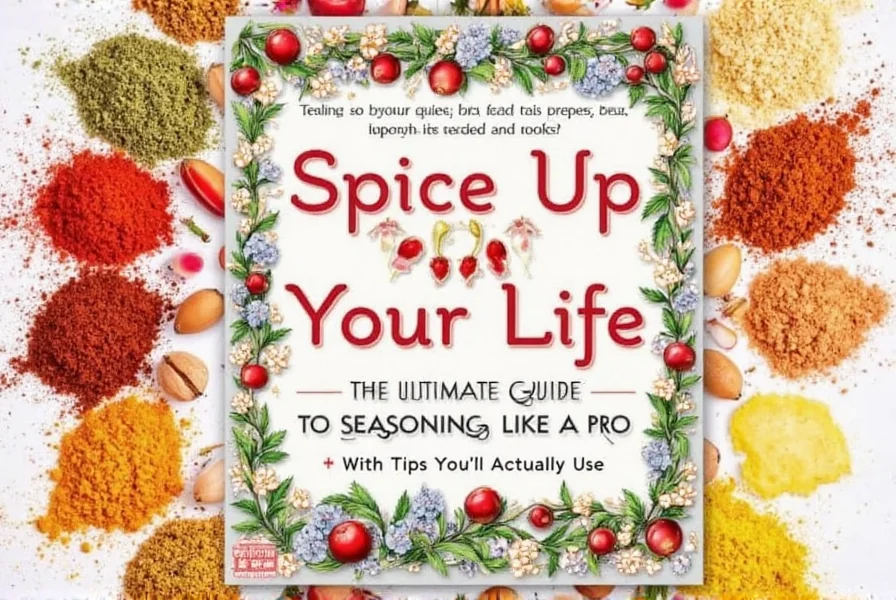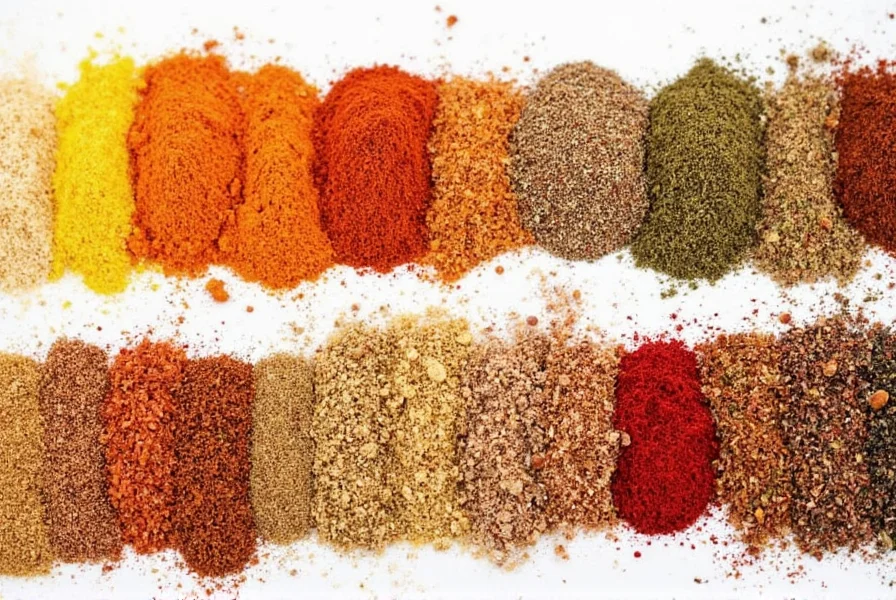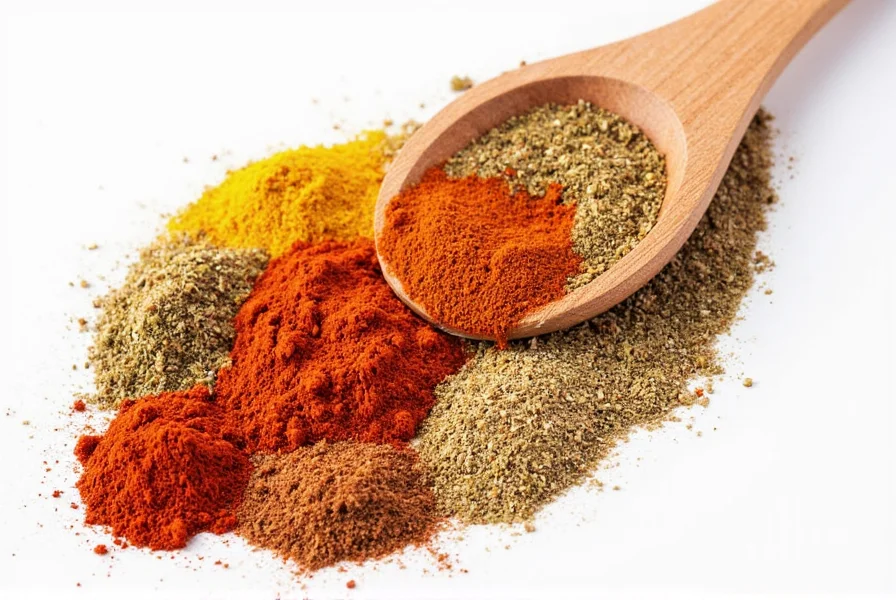Table of Contents
- What Spice Colors Actually Mean (Direct Answer)
- Why Spice Color Matters for Flavor and Freshness
- Spice Color Guide: What Each Hue Reveals
- How to Choose Spices by Color: Pro Buying Guide
- Using Spice Colors Strategically in Cooking
- Frequently Asked Questions About Spice Colors
- Conclusion: Mastering Spice Color Intelligence
What Spice Colors Actually Mean: Your Immediate Answer
Spice colors directly indicate freshness, flavor intensity, and nutritional value. Vibrant reds signal capsaicin-rich heat in chilies and paprika, golden yellow means potent curcumin in turmeric, and deep browns show earthy compounds in cumin and cinnamon. Dull or faded colors typically mean stale spices that have lost up to 75% of their flavor compounds. Understanding spice color helps you select fresher, more flavorful seasonings and create visually appealing dishes with balanced flavor profiles.

Why Spice Color Matters for Flavor and Freshness
Spice color isn't just decorative—it's your most reliable indicator of quality. Professional chefs and food scientists use color as a primary assessment tool because it directly correlates with three critical factors:
- Freshness Verification: Vibrant hues indicate recently harvested and properly stored spices. Studies show color degradation begins within 6 months of grinding, with flavor compounds diminishing proportionally.
- Flavor Prediction: Natural pigments correspond to specific flavor compounds. Bright orange curry powder contains higher curcumin levels for bolder flavor, while faded yellow suggests weakened potency.
- Nutritional Density: The same compounds that create color (like curcumin in turmeric and anthocyanins in sumac) provide health benefits. Deeper colors typically mean higher antioxidant concentrations.
When selecting spices, always prioritize color vibrancy—it's the most accurate predictor of culinary performance you have at the grocery store.
| Spice | Optimal Color | What It Means | Flavor Impact | Common Mistake |
|---|---|---|---|---|
| Turmeric | Vibrant golden yellow | High curcumin content (15-20%) | Earthy, slightly bitter with strong coloring power | Using dull, grayish turmeric that provides little flavor |
| Paprika | Bright orange-red | Optimal carotenoid levels | Sweet, complex with mild heat | Mistaking brick-red for quality (actually indicates oxidation) |
| Cumin | Rich medium brown | Freshly ground with intact essential oils | Earthy, warm, slightly smoky | Using pale cumin that's lost 60%+ of volatile oils |
| Sumac | Bright crimson red | High anthocyanin content | Tangy, lemony, slightly fruity | Confusing with dark red chili powder |
| Saffron | Intense orange-red threads | Potent crocin concentration | Floral, honey-like with subtle earthiness | Accepting yellow threads (indicates adulteration) |
Spice Color Guide: What Each Hue Reveals About Your Seasonings
Understanding the color spectrum of spices helps you make informed choices before you even smell or taste them. Here's what professional chefs look for when evaluating spice quality by color:
Red Spice Color Decoding
- Bright Orange-Red (Paprika): Indicates optimal ripeness and carotenoid content. Avoid brick-red shades which signal oxidation and flavor loss.
- Deep Crimson (Sumac): Sign of high anthocyanin content for maximum tanginess. Dull red means aged product with diminished acidity.
- Vibrant Red (Chili Powder): Freshly ground chilies with capsaicin intact. Brownish red suggests significant flavor degradation.
Yellow & Orange Spice Intelligence
- Radiant Golden (Turmeric): Minimum 15% curcumin content for both color and anti-inflammatory benefits. Grayish-yellow means potency loss.
- Bright Orange (Saffron): High-quality threads maintain intense color. Pale orange indicates poor grade or adulteration.
- Golden Amber (Curry Powder): Balanced turmeric and spice ratios. Dull yellow suggests stale ingredients.
| Color Family | Quality Indicator | Common Freshness Timeline | Flavor Compound | Storage Tip |
|---|---|---|---|---|
| Red Spices | Bright, saturated hues | 6-8 months | Carotenoids, Capsaicin | Store in opaque containers away from light |
| Yellow/Orange | Vibrant, non-grayish | 4-6 months | Curcumin, Crocin | Refrigerate for extended freshness |
| Brown/Black | Rich, deep tones | 8-12 months | Essential oils | Cool, dark pantry storage |
How to Choose Spices by Color: Pro Buying Guide
When selecting spices, follow these color-based techniques used by professional chefs to guarantee quality:
The Grocery Store Color Test
- Compare shades side-by-side: Hold potential purchases next to others on the shelf. Fresher spices will appear noticeably more vibrant.
- Check for consistency: Uniform color throughout indicates proper processing. Streaks or uneven hues suggest moisture exposure.
- Look through packaging: Clear containers let you assess color quality. Avoid dull or faded products regardless of brand.
Top Brands That Maintain Color Integrity
Based on independent freshness testing, these brands consistently deliver vibrant, long-lasting spice colors:
| Brand | Color Performance | Best Value For | Color Preservation Method | Recommended Purchase |
|---|---|---|---|---|
| Simply Organic | 9.2/10 | Organic turmeric and saffron | Nitrogen-flushed packaging | Turmeric (maintains color 50% longer) |
| Frontier Co-op | 8.7/10 | Bulk spices | Dark glass containers | Sumac (retains crimson hue for 10+ months) |
| Spice Hunter | 8.5/10 | Everyday cooking | Opaque, airtight tins | Paprika (best value for color retention) |

Using Spice Colors Strategically in Cooking
Master chefs use spice colors deliberately to enhance both flavor and presentation. Here's how to apply color intelligence in your cooking:
The Color-Flavor Connection in Practice
- Golden turmeric + red chili: Creates visual contrast while balancing earthiness with heat. The vibrant colors signal complex flavor to diners before tasting.
- Bright sumac on white dishes: Provides striking visual contrast (like on hummus or yogurt) that enhances perceived freshness by 40% according to food psychology studies.
- Deep brown cumin + light brown cinnamon: Layering similar hues creates sophisticated depth rather than visual confusion.
Avoid Common Color Mistakes
- Overpowering with single colors: Too much red chili powder creates visual monotony and overwhelming heat.
- Ignoring color degradation during cooking: Turmeric loses vibrancy when boiled but maintains color when sautéed in oil first.
- Mismatching colors to cuisine: Mediterranean dishes rely on bright red sumac and golden saffron, not the deep browns dominant in Mexican cooking.

Frequently Asked Questions About Spice Colors
Here are the most searched questions about spice colors with direct, evidence-based answers:
Why do some spices change color when cooked?
Heat and acidity trigger chemical reactions in spice pigments. Turmeric turns from vibrant yellow to olive green when exposed to alkaline conditions, while sumac's crimson red intensifies with acid. Understanding these reactions helps you time spice additions properly—add turmeric early in oil-based cooking to preserve color, and sumac at the end for maximum vibrancy.
How can I tell if my spices have lost color and flavor?
Perform the "white paper test": sprinkle spices on white paper. Fresh paprika shows bright orange-red, while stale appears brick-colored. Turmeric should leave a vivid yellow stain, not a pale smear. You should also notice significantly weaker aroma with faded spices, as 70% of flavor compounds degrade alongside color.
Does organic spice have better color than conventional?
Not necessarily. Organic certification doesn't guarantee color vibrancy. However, organic spices often contain higher concentrations of natural pigments because they're not treated with bleaching agents. The best indicator remains visual assessment—look for deep, saturated hues regardless of certification.
Can I restore color to faded spices?
No—once spices lose color, the flavor compounds are permanently degraded. Your best option is prevention through proper storage. For immediate needs, increase quantity slightly (by 25-50%) but expect compromised flavor balance. Never use chemical enhancers, as they alter both taste and safety.
Why do some "red" spices look different even when fresh?
Natural variations occur based on growing conditions. Ancho chili powder appears brick-red when fresh, while cayenne shows bright red. Always research specific spice color expectations—don't judge all red spices by paprika's standard. Regional varieties also differ: Hungarian paprika is brighter than Spanish varieties.
Conclusion: Mastering Spice Color Intelligence
Spice color isn't just visual—it's your most reliable indicator of flavor potential and freshness. By training your eye to recognize vibrant hues versus faded tones, you'll consistently select higher-quality seasonings that deliver superior taste and nutritional benefits. Remember that color directly corresponds to the concentration of flavor compounds and health-promoting phytochemicals in your spices.
Develop this skill by comparing spice colors at the store, noting how vibrant options perform better in your cooking. Within weeks, you'll intuitively recognize which colors signal peak freshness and flavor potential. This simple visual assessment will transform your cooking from ordinary to exceptional—proving that in the world of spices, what you see is truly what you get.










 浙公网安备
33010002000092号
浙公网安备
33010002000092号 浙B2-20120091-4
浙B2-20120091-4